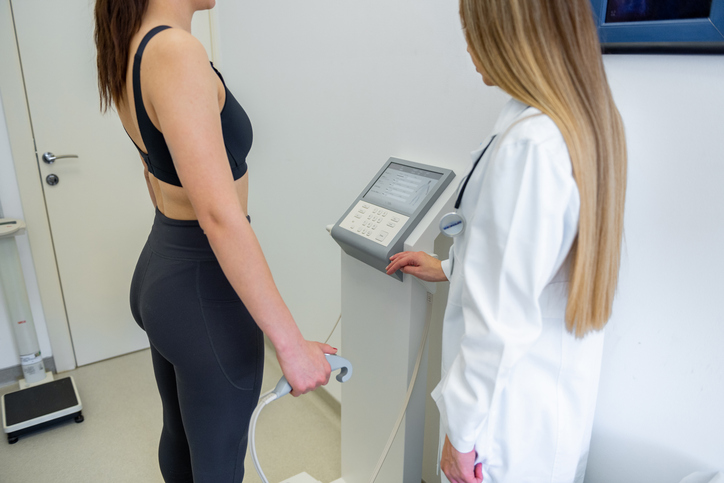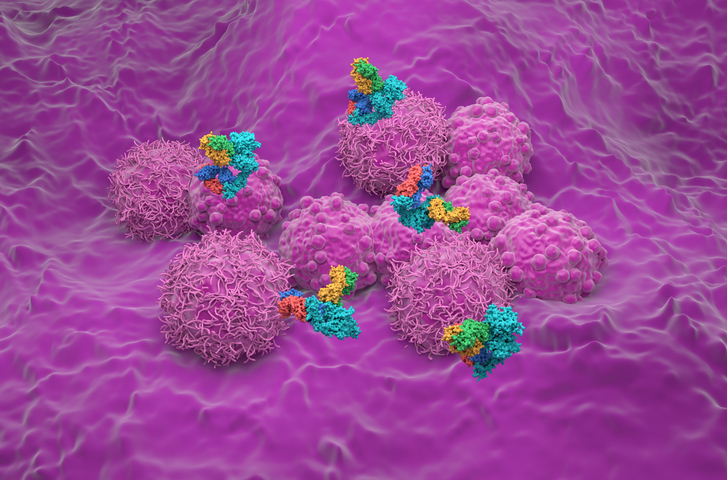HER2CLIMB-02 Study Data Assesses Trastuzumab Plus Tucatinib in Patients With HER2+ Breast Cancer: How Does This Fit Into the Treatment Paradigm?
By Oncology Brothers, Sara Tolaney, MD, MPH - Last Updated: March 26, 2025The Oncology Brothers—Rahul Gosain, MD, of the University of Rochester, and Rohit Gosain, MD, of the UPMC Hillman Cancer Center—are joined by Sara Tolaney, MD, MPH, of the Dana-Farber Cancer Institute, to discuss the HER2CLIMB-02 study presented at SABCS. The study assessed the use of trastuzumab plus tucatinib in patients with HER2+ metastatic breast cancer and observed a 24.1% reduced risk of progression or death with the combination versus trastuzumab plus placebo. The trio then discussed how this treatment option fits into the HER2+ breast cancer landscape.
—
Dr. Rahul Gosain: Another phenomenal San Antonio breast cancer symposium is now in the books. There was a lot of data presented here, but today we have Dr. Sara Tolaney from Dana-Farber to focus on one particular study, the HER2CLIMB-02 study, looking at metastatic HER2-positive breast cancer disease. Sara, thank you so much for joining us.
Dr. Tolaney: Thank you so much for having me.
Dr. Rohit Gosain: Welcome Sara. Before we dive into the HER2CLIMB-02 study, it is important to lay the foundation where we stand in stage 4 setting for HER2-positive advanced metastatic patient population.
Initially in first-line setting we do THP, which is taxane-based regimen along with HER2-directed therapy. On disease progression, we have a choice of T-DXd [fam-trastuzumab deruxtecan-nxki] or triplet tucatinib, trastuzumab, and capecitabine. Though T-DM1 [ado-trastuzumab emtansine] used to be part of our second-line regimen but that got kicked out to the third line after the approval of T-DXd and the triplet regimen. Now with HER2CLIMB-02 study that has come back in action with a combination.
Sara, if you don’t mind talking about the HER2CLIMB-02 study design and what did it show for its findings?
Dr. Tolaney: HER2CLIMB-02 is trying to look to see if adding tucatinib to T-DM1 would improve progression-free survival (PFS), not just in an all-comer population of patients who have metastatic HER2-positive disease, but it also importantly included patients who could have brain metastases. They could have active brain metastases or stable treated brain metastases or could have no brain metastases and be included in this trial.
This was really a trial for patients who had progressed on a prior taxane and trastuzumab. The majority of patients were entering the trial on the second-line setting. There were very few patients, I think about 12% in the first line and then some in the third line and beyond. But again, the majority were second-line patients.
The primary endpoint of this study was progression-free survival. What we saw was that adding tucatinib to T-DM1 did significantly improve progression-free survival. It had an absolute delta between the 2 arms of about 2 months, so going from a little over 7 months to about nine and a half months.
Then among the patients who had brain metastases, which was about 40% of the population, there was also an improvement in PFS going from 5.7 to 7.8 months, about a 2-month difference.
We did not, however, see the data broken up by patients who had active brain metastases versus stable treated brain metastases. At this time, the overall survival (OS) data is very immature. We don’t have the level of data, for example, that we have had with HER2CLIMB, which had looked at the capecitabine, tucatinib, trastuzumab triplet. Again, just with the maturity of the data being a bit more limited.
Really a positive study, an improvement in PFS. The delta was not huge, but certainly still a positive study, suggesting that this combination is at least additive if not synergistic.
Dr. Rahul Gosain: Sara, thanks for going over that, but there are a few things that I want to reiterate. HER2-positive disease has the highest incidence of CNS [central nervous system] disease when it comes to breast cancer, hormone-receptor, triple-negative, or again here HER2-positive.
Historically, these patients were excluded from clinical trials, but it is so good to see high enrollment of CNS-positive disease. We’d love to see more granular data saying treated versus active. Then of course looking at the data, there’s a robust CNS activity here, which is very encouraging.
Dr. Tolaney: Your point is really important. We know in someone’s lifetime those metastatic HER2-positive disease, about 50% of patients will have brain metastases. It’s so critical that HER2CLIMB really changed our paradigm. As you said, people were usually excluded if they had brain metastases, but it is so critical to understand how these drugs work in the CNS, and we learned that from HER2CLIMB, and it was really nice to see that HER2CLIMB-02 also included patients who could have even had active brain metastases.
I’m really interested to learn more about how those patients with active brain metastases do and obviously see the totality of more mature data to see if there is a survival advantage in this particular combination.
Dr. Rahul Gosain: Absolutely. Sara, coming back to this algorithm. In your clinic now, potentially 3 options, T-DXd versus doublet, tucatinib with T-DM1, or triplet tucatinib with capecitabine and trastuzumab: Who is going to get what?
Dr. Tolaney: Good question. It’s nice to have choices, but I will say that I very much agree that THP is our first-line standard. I will say for almost all patients, T-DXd is really the second-line standard. Seeing a 28-month PFS in DESTINY-Breast03, that is unprecedented. It is 4 times longer than T-DM1, and we’re seeing data that it is even working in patients with brain metastases.
Obviously, we don’t have phase 3 data with an OS endpoint like HER2CLIMB demonstrate a significant improvement in OS in the brain metastases patients. But now we’ve seen even the pooled analysis from the DESTINY trials. We’ve seen some smaller trials like TUXEDO and DEBBRAH suggesting robust, about 50%, CNS response intracranially, which is confirmed in the pooled analysis.
I will say I’m pretty comfortable with T-DXd for almost all of my patients second line. I am typically though using the capecitabine, tucatinib, trastuzumab regimen third line for most patients.
Here now as you point out, there’s this conundrum. Let’s pretend T-DM1 tucatinib gets an approval based on HER2CLIMB-02. How would we pick and choose?
I think I probably would still stick with the capecitabine, tucatinib, trastuzumab regimen in that third-line setting for most patients. The reason being that we haven’t seen yet mature data from T-DM1/tucatinib, and I’m not really sure what the delta will be in terms of survival.
The huge advantage obviously for the HER2CLIMB regimen has been its ability to work so well in the CNS, and we don’t have the granular data yet from HER2CLIMB-02.
I think there’s also the issue of toxicity differences. With the T-DM1/tucatinib regimen, we did see that there was a pretty high rate of grade 3 LFTs [liver function tests], and the discontinuation rate was around 20% in that arm.
While LFTs we can usually deal with, you need to hold and dose modify and you can make your way through it, it does cause some dose delays and is a little bit of a headache. I think it’s a tricky decision. I think the capecitabine regimen, again, just has more mature data, so that’s probably what I would stick with.
I say though that 1 question not really addressed in HER2CLIMB-02 and so not fair to really say, but could you use them sequentially? Because what if someone progresses in the brain after capecitabine, trastuzumab, tucatinib? Would you give T-DM1/tucatinib? Could there be any benefit for continuation of tucatinib beyond progression in the CNS? We haven’t addressed this question.
Just seeing though that in the original HER2CLIMB, that there were patients who got radiated in the CNS and continued and continued to have benefit from exposure to tucatinib makes me wonder. I do think we need more studies to address this sequencing question, which is now going to arise that we have different backbones.
Dr. Rohit Gosain: I feel like the sequencing question is coming about in every aspect of breast cancer treatment, especially with the entrance of antibody-drug conjugates (ADCs).
Now though we have established in second line that T-DXd has a great responsiveness, and with this triplet versus doublet is certainly the question. Now the triplet’s diarrhea certainly is a concern, where we tend to rely of getting rid of capecitabine being the first one to be contributing to the diarrhea while continuing on with tucatinib and trastuzumab. Is that something that you would consider when utilizing triplet versus doublet? The toxicity profile, the age aspect of the patient?
Though I know the benefit that we are seeing is rather limited, but at the end of the day, we are so used to utilizing T-DM1 post-KATHERINE trial in adjuvant setting of HER2 disease. As a community oncologist, we are a lot more comfortable from that aspect of T-DM1.
Dr. Tolaney: Yeah, you bring up an excellent point that there are very different toxicity profiles. Certainly, the GI [gastrointestinal] toxicity with the capecitabine, tucatinib, trastuzumab regimen is not insignificant, and we do often have to dose modify as you point out, sometimes the capecitabine, sometimes the tucatinib, sometimes both to get it to be tolerable.
I think that T-DM1/tucatinib, I think it’s generally pretty easy. It’s mostly laboratory abnormalities. I am a little worried though because we don’t know how T-DM1 performs post-T-DXd.
You brought up this issue of sequencing and ADC sequencing. There’s some thought that T-DXd downregulates HER2 upon progression, could that impact the efficacy of T-DM1 where it is so reliant on having HER2 expression to work?
My guess is it’s a transient downregulation, and it probably comes back up, but it does make me worry a little. I know there are some providers who are reluctant to use a T-DM1-based regimen directly post-progression on T-DXd, so that may sway people a little bit toward the triplet in the post-progression setting.
But I really think we have no data about using any of this stuff post T-DXd. All these trials were done in a setting where these patients were T-DXd-naïve, and we don’t actually know how any of this performs. It’s a tough decision.
Dr. Rahul Gosain: I think a few things to add on here. When we were talking about downregulation, that’s the same thing that we potentially will run into trastuzumab with the triple therapy as well saying should we consider completely different with chemotherapy where I think tucatinib or capecitabine plays a bigger role and having that HER2 backbone.
The other thing we were talking about: side effects. I think in general as a community oncologist, a few things to mention. With T-DXd, we have to be careful about pneumonitis, nausea, fatigue. With T-DM1, we have to be careful with neuropathy and thrombocytopenia when comes to capecitabine or tucatinib. Again, hand-foot syndrome from capecitabine and diarrhea.
These medications have side effects. Picking the right patient based on what the patient wants and what we’re trying to achieve is so important.
Dr. Tolaney: I totally agree. It is really critical, and sometimes these decisions really need to be personalized. You do have to have a discussion with the patient and see what they think is relevant to them and which toxicities they’re most concerned about to be able to pick and choose, but it’s nice that there are the choices for them.
Dr. Rohit Gosain: I feel like as a community oncologist, we need to take the onus and get comfortable with these antibody-drug conjugates because we continue to see them in bladder cancer or lung cancer. Now breast cancer is definitely taking the lead here. Again, prior closing in second-line setting once the disease progresses on taxane with HER2-directed therapy, there are options of T-DXd; tucatinib, trastuzumab, capecitabine combination; and now T-DM1 plus/minus tucatinib though we’ll have to wait for FDA approval on this and longer-term data to really support that.
But it is important to stress that this trial did include patients with active CNS disease where this population does get left behind.
Sara, thank you so much for joining us and going over this practice-changing data and kudos again to the HER2CLIMB-02 team for focusing on active CNS disease.
Dr. Tolaney: Thank you very much for having me.







 © 2025 Mashup Media, LLC, a Formedics Property. All Rights Reserved.
© 2025 Mashup Media, LLC, a Formedics Property. All Rights Reserved.